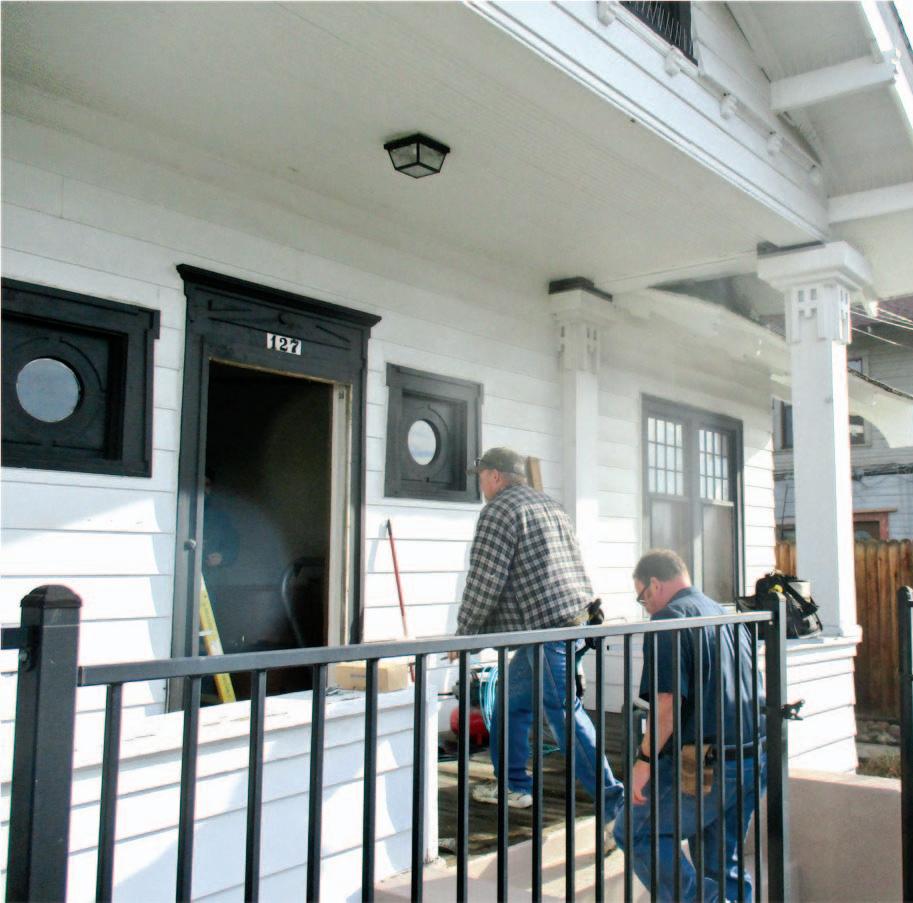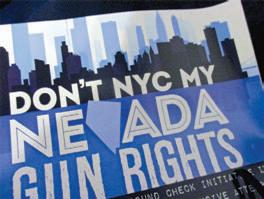
6 minute read
News
from April 21, 2016
Tribal lands restored
The U.S. Senate has approved S. 1436, a Nevada Native Nations Land Act, one of three tribal lands bills approved. The measure must still pass the House. It would transfer land from the management of federal agencies to tribal reservations:
Advertisement
About 19,094 acres of Bureau of Land Management-managed land to the McDermitt Paiute and Shoshone Tribe;
About 82 acres of U.S. Forest Service-managed land to the Shoshone-Paiute Tribes of the Duck Valley Indian Reservation;
About 941 acres of BLM-managed land to the Summit Lake Paiute Tribe;
About 13,434 acres of BLM-managed land to the Reno-Sparks Indian Colony;
About 6,357 acres of BLM-managed land to the Pyramid Lake Paiute Tribe; and
About 31,269 acres of BLM-managed land to the Duckwater Shoshone Tribe.
“The Nevada Native Nations Land Act is an example of the Senate listening to Indian Country and responding,” said Senate Indian Affairs chair John Barrasso, a Wyoming Republican. “Holding these lands in trust for the tribes will better empower them to use their lands as they see fit.”
Which is not the same thing as saying tribes can use their lands as they see fit. The bill contains language that says the U.S. Interior secretary can engage in restoration and fuel reduction activities on the land as well as sage hen (sage grouse) habitat restoration—and tribal gambling is prohibited.
U.S. Sen. Dean Heller of Nevada said, “These are the ones [Nevada tribal leaders] who know how best to use it in order to create local jobs and economic development. That’s the way it should be.”
As long as they don’t compete with white casinos.
This stuff is made in Virginia Deadline looms
New York bashing went out of fashion after September 11, but it seems to be back, at least in Nevada.
Advertising like Pace Picante’s “This stuff was made in New York City” commercials was dropped following the 2001 tragedies. Now, the National Rifle Association, in its campaign against the firearms background check initiaNRA LEAFLET tive petition, is pitting New Yorkers against Nevadans by using “NYC” as an expletive. Leaflets and bumpers strips signed by the National Rifle Association use the slogan “Don’t NYC my Nevada gun rights.”
The petition was placed on the ballot by Nevadans’ signatures and will be voted on in November. It and other ballot measures around the country are being sponsored by billionaire Michael Bloomberg. The NRA is based in Virginia.

Teen intellect at risk
Nontraditional smoking—e-cigarettes, hookahs—is still rising among teens. As a result, efforts to reduce high school and middle school smoking are facing difficulties.
“E-cigarettes are now the most commonly used tobacco product among youth, and use continues to climb,” said Centers for Disease Control director Tom Frieden in a prepared statement on April 15. “No form of youth tobacco use is safe. Nicotine is an addictive drug and use during adolescence may cause lasting harm to brain development.”
A new CDC survey of teens in 2015 found e-cigarettes are the most used smoking product among teens.
That’s 16 percent of high school students and 5.3 percent of middle school using e-cigarettes.
—Dennis Myers
Effort to curb campus sprawl comes to a head
An April 27 meeting of the Reno City Council could settle the fate of a group of by 19th century Reno homes near the Dennis Myers University of Nevada campus. Groups like the Reno Historical Preservation Society and the city’s Historic Resources Commission have been meeting and organizing to be ready for the council session. “Once the city council makes this decision, UNR won’t have to come back to the council for further approvals,” said real estate agent Barrie Lynn, a historic preservation supporter. The university wants to plow under the homes and shut down Center and Lake streets, calling it the Gateway Precinct or Gateway Project. The university has been vague about what it would then do with the properties, but said a
Barrie Lynn Historic preservationist College of Business complex is one possibility. “We will explore the possibility of constructing an academic facility, such as a College of Business complex,” according to a university plan. “The Gateway Project will also likely include student housing for upperclassmen and outdoor recreational fields.”
At a September meeting of the Nevada Board of Regents, UNR President Marc Johnson was told to move ahead with design of a business building for the site.
But UNR’s Heidi Gansert told KUNR on April 6, “We are not looking at demolishing those buildings. We’re working to try to find alternatives, and … that’s reusing them or reusing portions of them or moving them.”
A city proceeding involving the University of Nevada, Reno is different from its other duties that deal with development or construction.
“The tricky part is that the campus is exempt from permitting but not from zoning,” Lynn said.
That may be one of the reasons the council in years past has gained a reputation for a sweetheart relationship with UNR. Residents of campus neighborhoods have sometimes complained that UNR gets a free ride on some issues, particularly parking.
Lynn says the proposal before the council is “so convoluted and complicated” that it will be a challenging subject for people attending. It will involve council deliberations on the portion of the city master plan dealing with that one part of the city.
Workmen enter a university-owned building on Eighth Street between Center and Lake streets.
Commission snubbed?
There have been some complaints that the city’s Historic Resources Commission has been largely ignored on the issue. DowntownMakeover.org noted in February that the HRC “only recently had the chance to insert verbiage into the proposed plan regarding historic preservation, a small paragraph in the plan that reads ‘Historic characteristics should be respected and maintained when possible and new development should demonstrate an effort to retain historic character throughout the city.’ … [T]o be on the HRC, you actually have to have a degree, with the exception of one person who has to have historic preservation experience? It’s a blueribbon panel. It seems sometimes like the HRC exists only as a requirement for the City of Reno to be a certified government entity. The HRC is grossly under-utilized, yet it can be argued they collectively have more experience than our planning commission. Does the City of Reno utilize the HRC to actually plan development, or only use it to review development?”
The HRC does not have a big public profile. Its page on the city website does not list its members or provide any way to contact them.
It met at the beginning of this month and called for preservation of the Center/Lake neighborhood.
Lynn said, “Supporting historic preservation doesn’t mean that you’re anti-development. It just means you support a thoughtful approach to it.”
Brekhus pointed to the language of Nevada law.
“You know, it’s the state law determination, will the public ‘be










